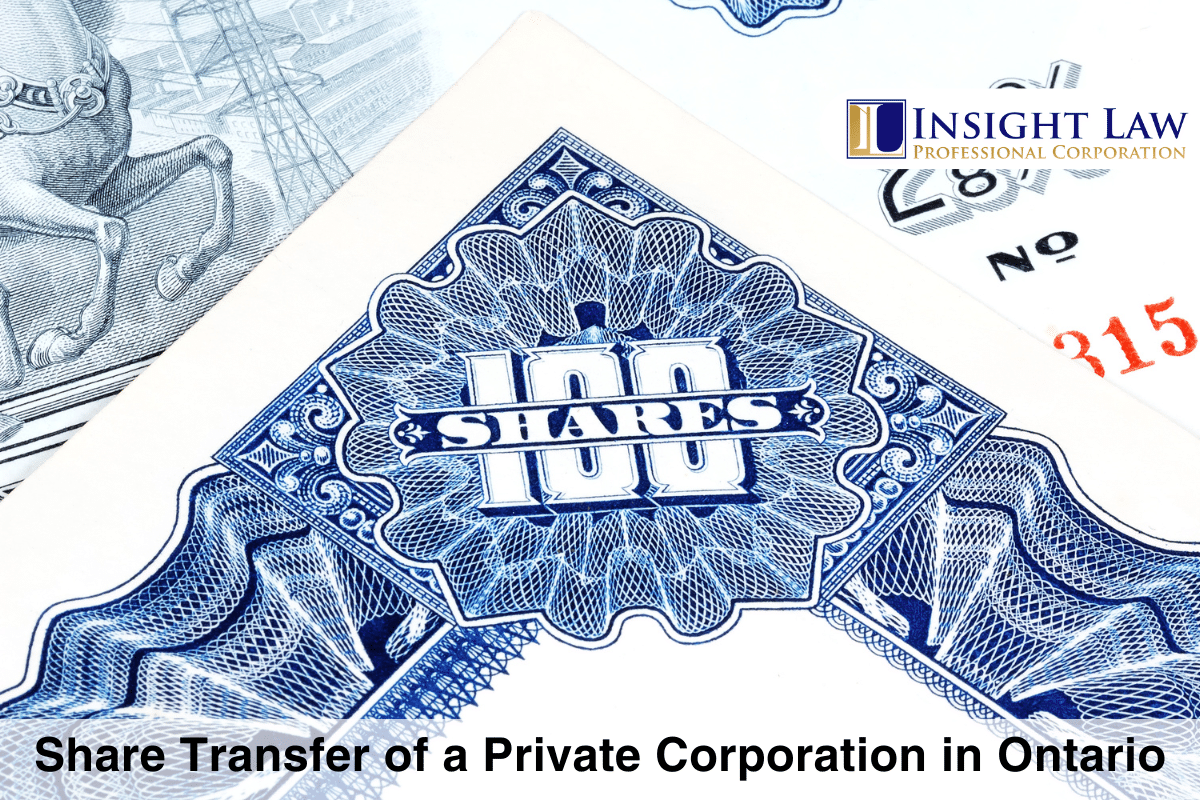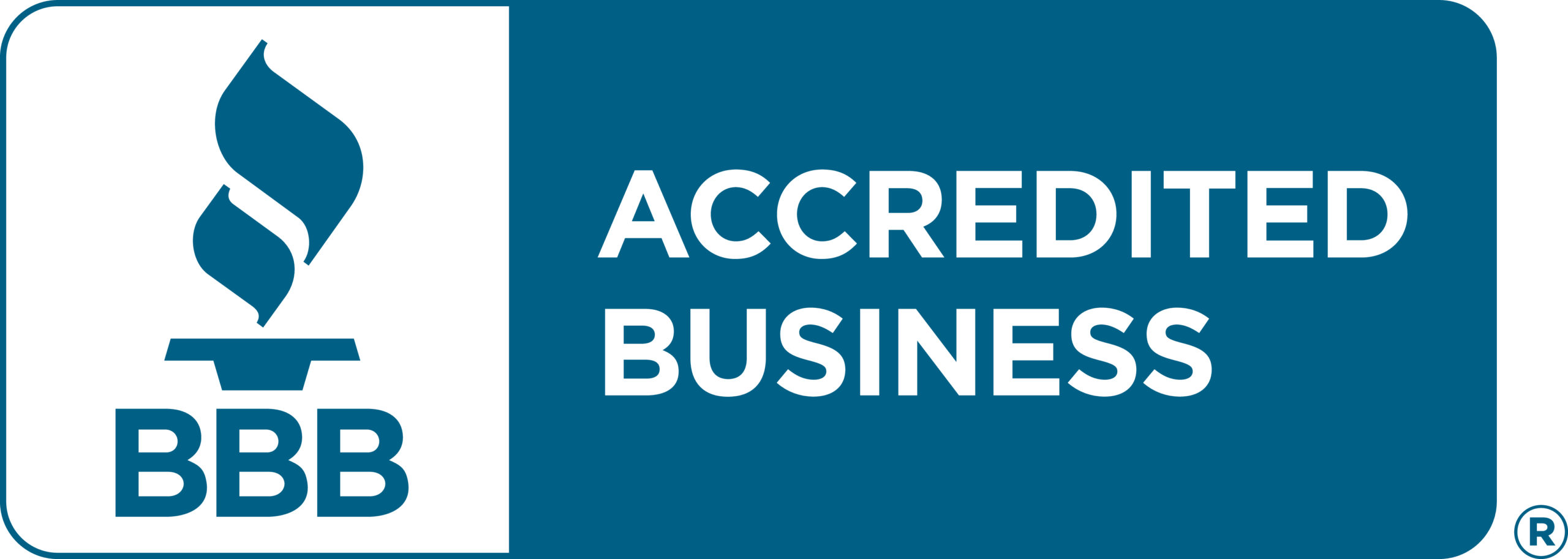Transferring shares in a private corporation is a key part of business ownership changes. Whether you’re selling shares, gifting them to family, or bringing in new investors. A share transfer ensures ownership is legally recorded and protects the seller and buyer.
Transferring shares in an Ontario-based private corporation is governed by statutory regulations, articles of incorporation, and shareholders’ agreements. This article outlines the key aspects of share transfer, including the legal framework, procedural steps, and strategic considerations.
Insight Law Professional Corporation is a corporate law firm. If you need guidance from a corporate lawyer, contact us and see how our firm can help.
- What is Share Transfer?
- Legal and Corporate Considerations Before Transferring Shares
- What is a Share Certificate?
- Are There Restrictions on Share Transfers?
- Legal Framework
- Steps to Transfer Shares in a Private Corporation
- Tax Implications of a Share Transfer
- Share Transfer in Family Succession Planning
- Summary
What is Share Transfer?
A share transfer happens when a shareholder sells or gives their shares to someone else. This could be another shareholder, a new investor, or a family member.
There are two common ways to transfer shares:
- Selling shares – A shareholder sells their shares to another person or company for an agreed price.
- Gifting shares – A shareholder gives shares to a family member or another person without payment, often for succession planning.
Share transfers happen for many reasons, such as changes in ownership, succession planning, or bringing in new investors. However, private corporations often have rules on how and when shares can be transferred.
The share transfer process is subject to the governing laws of the jurisdiction, the corporation’s articles of incorporation, and any shareholder agreements. The transfer of shares allows for the movement of capital and ownership within the private sector. It enables investors to sell their holdings, facilitates strategic acquisitions, and allows new investors to participate in the growth of a corporation. However, due to the potential impact on corporate control and governance, share transfers are regulated to protect shareholder interests.

Legal and Corporate Considerations Before Transferring Shares
Before transferring shares, you need to review the corporation’s legal documents, including:
- Articles of Incorporation – These outline the company’s share structure and transfer rules.
- Shareholder Agreement – This may include restrictions on selling shares, such as requiring approval from other shareholders.
- Preemptive Rights – Some agreements give existing shareholders the first right to buy shares before they are sold to outsiders.
In many cases, directors or shareholders must approve the transfer before it becomes official. Always check company agreements to avoid conflicts or legal issues.
What is a Share Certificate?
A Share Certificate is a legal document that proves ownership of shares in a corporation. It includes key details such as the shareholder’s name, number of shares owned, share class, and issue date.
In private corporations, share certificates are issued to shareholders as proof of their investment and must be recorded in the company’s share register.
Are There Restrictions on Share Transfers?
Yes, restrictions on share transfers are common, especially in private corporations where maintaining a certain ownership structure is important to the company’s governance and operational strategy. These restrictions protect the interests of the corporation and its shareholders by controlling how and to whom shares can be transferred. They are usually outlined in the corporation’s articles of incorporation, by-laws, and shareholder agreements. The purpose of imposing such restrictions is to prevent unwanted third parties from acquiring a stake in the company, ensure that new shareholders align with the corporation’s values and objectives, and protect the existing shareholders’ rights and investments.
Restrictions can take various forms, including pre-emptive rights, rights of first refusal, and clauses requiring board or shareholder approval for transfers. Each manages the company’s ownership in a way that is consistent with its overarching goals.
For instance, a right of first refusal can delay or deter the sale of shares to outside parties, as the shares must first be offered to existing shareholders or the corporation itself. While restrictions can limit the freedom to transfer shares freely, they are required to preserve the stability and integrity of the company’s ownership structure.
Legal Framework
Business Corporations Act (Ontario) & Canada Business Corporations Act
The primary statutory framework governing the transfer of shares in Ontario is the Business Corporations Act (OBCA) and the Canada Business Corporations Act. The regulation sets out the basic rules for share transfers, including the requirement that shares be fully paid before they are transferred and the need for the corporation to maintain a central securities register. It also provides shareholders with certain preemptive rights, giving existing shareholders the right to purchase shares before offering them to external parties.
Articles of Incorporation and Shareholders’ Agreement
The specific rights, restrictions, and procedures for transferring shares are often detailed in a corporation’s articles of incorporation and any applicable shareholders’ agreement. These documents may impose additional requirements beyond those found in the OBCA, such as approval by a certain percentage of shareholders or the board of directors, right of first refusal, or shotgun clauses. They may also specify the method for determining the price of the shares to be transferred.
Steps to Transfer Shares in a Private Corporation
- Review Governing Documents: The first step in any share transfer is to review the corporation’s articles of incorporation, by-laws, and shareholders’ agreement to understand any restrictions or procedures that must be followed.
- Compliance with Legal Requirements: Ensure that the transfer complies with the OBCA and other relevant legislation, such as securities laws, which may apply if the shares are considered securities.
- Board Approval: In many cases, the board of directors must approve the transfer of shares, especially if there are restrictions on transferability.
- Execution of Share Transfer Documents: The parties involved must execute the appropriate share transfer documents. This typically includes a share transfer form and may require updating the corporation’s central securities register.
- Payment and Delivery: The purchaser typically delivers payment for the shares to the seller, and the seller delivers the share certificates, if any, to the purchaser.
- Update Corporate Records: The corporation’s central securities register must be updated to reflect the new ownership of the shares.
Tax Implications of a Share Transfer
Transferring shares may have tax consequences, including:
- Capital Gains Tax – If the shares are sold for a profit, the seller may need to pay capital gains tax.
- Tax Deferral Options – In some cases, tax can be deferred using rollover provisions like Section 85 or Section 86 rollovers.
- Gifted Shares and Estate Planning – Gifting shares may have tax implications, especially if the shares increase in value over time.
It’s important to consult a tax professional before transferring shares to avoid unexpected tax liabilities.
Share Transfer in Family Succession Planning
Many business owners transfer shares to family members as part of succession planning. This can help ensure the business stays within the family while minimizing tax burdens.
Common strategies for family share transfers include:
- Gifting shares over time to reduce tax impacts.
- Setting up a family trust to manage business ownership.
- Using a holding company to structure the transfer efficiently.
Proper planning ensures a smooth transition while protecting the business and reducing tax risks.
Summary
The transfer of shares in a private corporation in Ontario involves legal and procedural steps to ensure compliance with the law and to protect the interests of all parties involved. Given the complexities involved, parties are advised to seek the guidance of legal professionals specialized in corporate law to navigate these processes effectively.
The information provided above is of a general nature and should not be considered legal advice. Every transaction or circumstance is unique, and obtaining specific legal advice is necessary to address your particular requirements. Therefore, if you have any legal questions, it is recommended that you consult with a lawyer.







